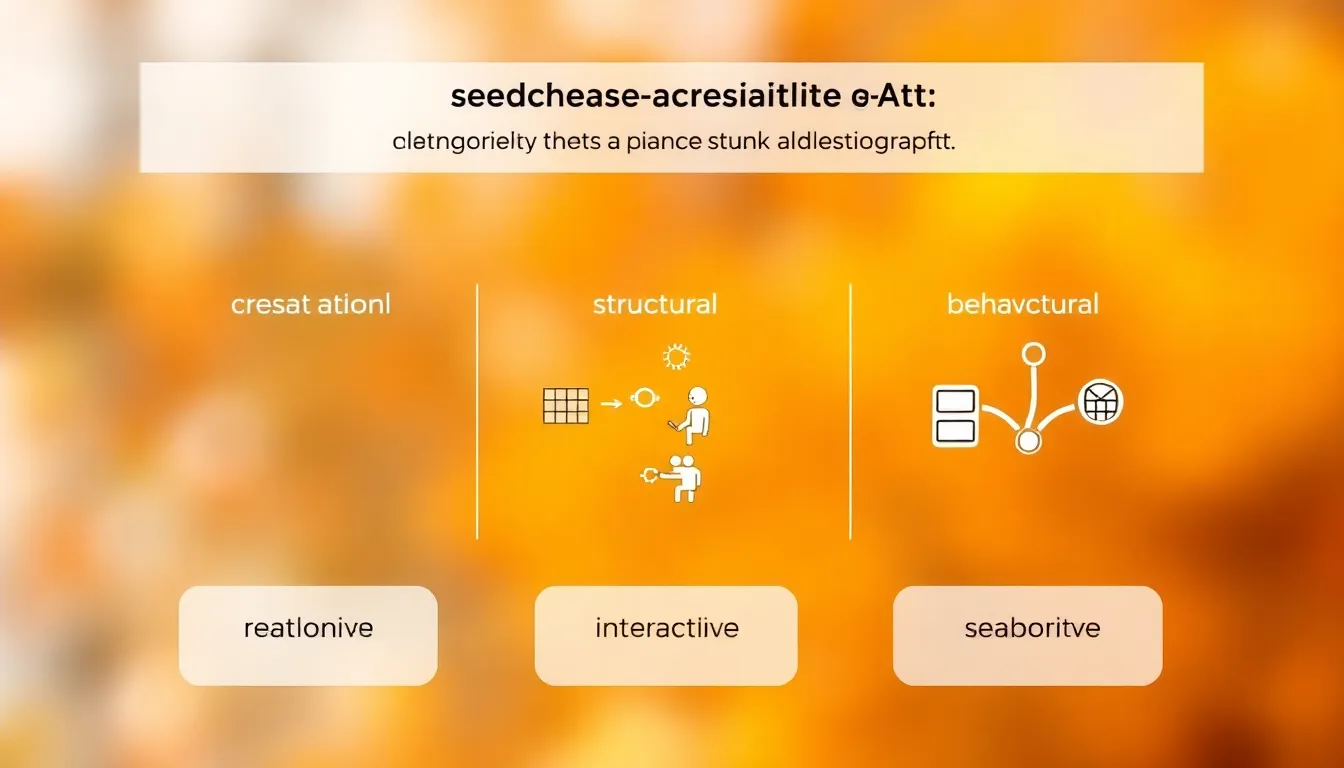Table of Contents
ToggleIn the ever-evolving world of programming, design patterns serve as essential blueprints for solving common software design challenges. These tried-and-true solutions streamline development processes, improve code maintainability, and enhance collaboration among developers. By leveraging design patterns, programmers can avoid reinventing the wheel and focus on crafting innovative applications.
Understanding design patterns not only boosts efficiency but also fosters a deeper comprehension of software architecture. From the simplicity of the Singleton pattern to the complexity of the Observer pattern, each offers unique advantages tailored to specific scenarios. As developers navigate the intricacies of coding, embracing these patterns can lead to cleaner, more robust applications that stand the test of time.
Overview Of Design Patterns In Programming
Design patterns in programming serve as standardized solutions to common design problems encountered during software development. These patterns are categorized into three primary groups: creational, structural, and behavioral.
Creational Patterns
Creational design patterns simplify the object creation process. They provide mechanisms for creating objects in a manner suitable to the situation. Examples include:
- Singleton Pattern: Ensures a class has only one instance and provides a global access point.
- Factory Method: Allows subclasses to alter the type of objects that will be created.
- Abstract Factory: Creates families of related objects without specifying their concrete classes.
Structural Patterns
Structural design patterns focus on how objects and classes are composed to form larger structures. They assist in ensuring that if one part of a system changes, the entire system doesn’t need to refactor. Key examples include:
- Adapter Pattern: Converts the interface of a class into another interface clients expect.
- Decorator Pattern: Adds new functionality to an object without altering its structure.
- Proxy Pattern: Provides a surrogate or placeholder for another object to control access to it.
Behavioral Patterns
Behavioral design patterns deal with object interaction and responsibility delegation. They help in defining how objects communicate. Notable examples include:
- Observer Pattern: Defines a one-to-many dependency between objects so that when one object changes state, all dependents are notified.
- Strategy Pattern: Enables selecting an algorithm’s behavior at runtime, allowing flexibility in how algorithms are used.
- Command Pattern: Encapsulates a request as an object, thereby allowing parameterization and queuing of requests.
By applying these design patterns, programmers enhance code maintainability, readability, and scalability. Familiarity with these patterns equips developers with critical insights into software architecture, facilitating efficient and innovative development practices.
Types Of Design Patterns

Design patterns can be classified into three main categories: creational, structural, and behavioral. Each category addresses specific challenges in software design.
Creational Patterns
Creational patterns focus on object creation mechanisms, providing enhanced flexibility and efficiency. Key examples include:
- Singleton Pattern: Ensures a class has only one instance and provides a global point of access.
- Factory Method: Defines an interface for creating objects, permitting subclasses to alter the type of objects that will be created.
- Abstract Factory: Allows the creation of families of related or dependent objects without specifying their concrete classes.
- Builder: Separates the construction of a complex object from its representation, enabling the same construction process to create different representations.
- Prototype: Creates new objects by copying an existing object, promoting a more efficient object creation process.
Structural Patterns
Structural patterns deal with object composition, aiding developers in forming larger structures with greater efficiency. Notable patterns include:
- Adapter: Facilitates the interaction between incompatible interfaces, allowing them to function together.
- Decorator: Adds new functionalities to existing objects without altering their structure, promoting flexible extensions.
- Facade: Simplifies the interface for complex subsystems, providing a unified interface to a set of interfaces in a subsystem.
- Composite: Permits clients to treat individual objects and compositions of objects uniformly, promoting a tree structure.
- Bridge: Separates abstraction from implementation, allowing both to evolve independently.
Behavioral Patterns
- Observer: Establishes a one-to-many dependency between objects, triggering updates automatically to multiple observers when a subject changes.
- Strategy: Defines a family of algorithms, encapsulating each and making them interchangeable, allowing the algorithm to vary independently from clients.
- Command: Encapsulates a request as an object, allowing parameterization of clients with queues, requests, and operations.
- Chain of Responsibility: Passes a request along the chain of handlers, allowing each handler the option to process the request or pass it along the chain.
- State: Allows an object to alter its behavior when its internal state changes, representing state transitions.
Importance Of Design Patterns
Design patterns serve as crucial blueprints for efficiently solving common software design challenges. They enable developers to implement proven solutions, which streamlines the development process. By applying design patterns, programmers enhance code maintainability and reduce the likelihood of errors.
Developers improve collaboration through shared understanding when using design patterns. These patterns create a common language among team members, allowing for more effective communication. When teams adopt established solutions, they focus on innovation rather than rediscovering existing answers.
Understanding design patterns deepens knowledge of software architecture. For instance, the Singleton pattern ensures a class has only one instance, while the Observer pattern facilitates communication between objects. Each pattern provides distinct advantages tailored to specific scenarios, enhancing problem-solving capabilities.
Design patterns categorize into three primary groups: creational, structural, and behavioral. Creational patterns, including the Factory Method and Builder patterns, optimize object creation, contributing to system flexibility. Structural patterns, like the Adapter and Composite patterns, enhance object composition and integration, promoting efficient code organization. Behavioral patterns, such as the Strategy and Command patterns, effectively handle object interactions and responsibilities.
Utilizing design patterns leads to the creation of clean, robust applications characterized by improved readability and scalability. They establish a foundation that supports sustainable growth and efficient maintenance in software projects.
How To Implement Design Patterns
Implementing design patterns requires careful consideration and understanding of the specific context. Proper selection and application enhance software architecture significantly.
Choosing The Right Pattern
Choosing the correct design pattern hinges on the problem at hand. Identify key aspects of the project, including requirements, scalability, and collaboration needs. Each pattern serves distinct purposes:
- Creational Patterns: Ideal for object instantiation concerns. Use when needing flexible object creation.
- Structural Patterns: Helpful in defining relationships between entities. Use when needing to compose complex structures.
- Behavioral Patterns: Focus on interaction between objects. Use when managing object behavior and communication is essential.
Prioritize patterns based on project goals and long-term adaptability.
Common Pitfalls
Common pitfalls arise during design pattern implementation. Avoid these to ensure effectiveness:
- Overcomplicating Solutions: Avoid excessive use of patterns within simple problems. Select patterns fitting the complexity proportionately.
- Neglecting Context: Avoid applying patterns without analyzing the specific project context. Contextual relevance is crucial.
- Ignoring Team Familiarity: Avoid utilizing complex patterns if the team lacks experience. Ensure that the team understands the selected pattern.
- Forgetting About Maintenance: Avoid designing solely for immediate needs. Consider long-term sustainability and maintainability.
Recognizing these pitfalls helps in implementing design patterns effectively, contributing to cleaner and more maintainable codebases.
Design patterns are indispensable tools in the programmer’s toolkit. They provide structured solutions to common challenges while fostering collaboration and enhancing code quality. By leveraging these established patterns developers can create applications that are not only efficient but also scalable and maintainable.
Understanding the nuances of each design pattern enables teams to choose the right approach for their specific needs. This thoughtful selection process minimizes errors and promotes sustainable growth within software projects. Ultimately, embracing design patterns empowers developers to innovate while building on a solid foundation of proven solutions.




